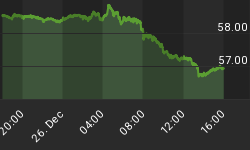Awareness and knowledge of inexorable economic principles may guide a handful of politicians and officials, but most are led by a mystic feeling of political power. They legislate and regulate any activity that draws their attention. Interest, which is the charge for loans, is a prime example. Since the dawn of recorded history it has been the object of politics. In ancient Greece, the Athenian statesman and lawgiver Solon forbade the taking of interest in some markets. Ancient Jews, the Christian Church, and Islam called it usury and forbade it among their own. When the prohibition was finally lifted in Western countries the rates of interest were rigidly set or narrowly circumscribed by governments or central banks. They rarely have been left to the free interplay of market forces.
In a free economy interest rates play a role similar to those played by prices and wages. They all spring from the peoples choices and value judgments giving rise to "demand and supply", and guide producers in their decisions on the kind and extent of their economic activity. The rate of interest shows businessmen how to use their limited capital over time, whether to use it in production for current consumption or invest it for want satisfaction in the future. Its basic function is to guide their entrepreneurial decisions.
The market rate of interest is a gross rate usually consisting of three distinctive components: the pure rate, the inflation rate, and the debtor's risk premium. The pure rate is the very core stemming from man's mortality which forces him to view economic phenomena in the passage of time. He ascribes a lower value to future goods and conditions than to present provisions; the difference is the pure rate. The inflation component appears whenever government or its central bank inflates and depreciates the currency; the rate of depreciation determines the size of the component. The debtor's risk premium, finally, reflects the reliability and trustworthiness of the debtor.
The Federal Reserve System, which has the legal responsibility for maintaining money and credit conditions favorable to sound business conditions, rarely pays attention to the market rate. Its policies are guided by popular doctrines calling for stimulation of national employment and income. It is unaware that all rates other than market rates give false signals to producers and consumers alike; they cause serious maladjustments. Federal Reserve rates that are higher than market rates cause credit contractions as few businessmen would be willing to incur new debt and many would even reduce their indebtedness. Fed rates that are lower than market rates promptly increase the demand for credit. With the basic rate at one percent, it cannot be surprising that total American debt has surged by several trillion dollars. Last year, household debt alone rose by more than one trillion dollars. The Federal government itself has been adding more than one billion and a half every day. The Federal Reserve System together with some 7,900 commercial banks provided the funds, and nearly one half of the Federal government's $6.8 trillion debt was lent by foreign commercial banks and central banks.
Such credit expansion, unsupported by genuine savings and actual production, generates illusionary gains making people believe that they are more prosperous than they actually are. Stock and real estate prices soar, tempting people to spend their gains, improving their homes and building mansions. Actually, they all, businessmen and stockbrokers, executives and workers, are consuming their capital. No matter how low the Federal Reserve may set its rate, the boom is bound to come to an end as soon as the maladjustments inflict losses on misguided businessmen. As more and more face difficulties or even fail, the readjustment begins; losses force business to readjust to the actual conditions of the market.
A credit boom unavoidably leads to a recession which is the readjustment to market data, that is, to the true rate of interest. Some malinvestments are abandoned, others merely reduced in value. But, in the end, there is general impoverishment. Some people who recognize the maladjustments may increase their wealth, but investment errors and cheerful consumption reduce the large majority.
The Federal Reserve is doggedly ignoring the market rate of interest which alone represents the judgments and preferences of the people. It continues to direct the credit expansion which not only has turned housing into a large bubble and rekindled the stock market but also has given rise to a voluminous foreign trade imbalance. Both, domestic as well as foreign maladjustments, are inflicting growing pains on commerce and industry. Sooner or later, they will remind even Federal Reserve officials and Washington politicians that there is a market rate of interest.
















